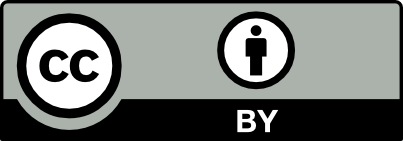Optimizing of extraction of bioactive components from Sea Buckthorn (Hippophae Rhamnoides L.) pomace and develope of antioxidant-enriched apple juice
DOI:
https://doi.org/10.14232/analecta.2018.1.1-7Keywords:
sea buckthorn, pomace, apple juice, antioxidant, by-product, product-developmentAbstract
In our study, we were looking for an alternative to use of sea buckthorn pomace to open new opportunities. The dried pomace was extracted in a different method to achieve the highest antioxidant content. Ethanol and acetone were used as solvents, applied in different concentration. For the selection of the optimum extraction method, four spectrophotometric measurements were performed. With the best extract, three types of apple juice were made from apple juice concentrate by diluting it with different percentages of water and pomace extracts. The spectrophotometric measurements were also performed for juice samples to check the increase in amount of antioxidant components in the apple juice. Acceptability of enriched juices was determined by sensory evaluation and short market research. Based on the results the optimum extraction agent is 40 m/m % acetone for enriching apple juice. The results showed that there is a demand for the consumption of enriched juice with sea buckthorn pomace extracts and the fruit juice enriched with the 1:1 ratio of extract: water mixture is the most optimum according to sensory evaluators. Further examination could reveal whether the extracted antioxidant content of the pomace could be used as bio-preservatives in the food industry.
Downloads
References
[2] K. Kónya, Élelmiszeripari hulladékok gyűjtése, ártalmatlanítása, hasznosítása. Szarvas, 5-6 (46) (2000), pp. 63-64
[3] S. Perino-Issartier, M. Abert-Vian, F. Chemat, Solvent free microwave-assisted extraction of antioxidants from sea buckthorn (Hippophae rhamnoides) food by-products. Food and Bioprocess Technology, 4 (6) (2011), pp. 1020-1028.
[4] S.N. Misi, C.F. Forster, Semi-continuous anaerobic co-digestion of agrowaste. Environ Technol 23 (2002), pp. 445–451.
[5] R. Sharma, H.S. Oberoi, G.S. Dhillon, Fruit and vegetable processing waste: renewable feed stocks for enzyme production. In Agro-Industrial Wastes as Feedstock for Enzyme Production (2016), pp. 23-59.
[6] J.G. Krishna, M. Chandrasekaran, Biochemical and nutritional aspects of food processing by-products. Valorization of food processing by-products. (2012)
[7] Suryakumar G, and Gupta A. (2011). Medicinal and therapeutic potential of Sea buckthorn (Hippophae rhamnoides L.). J Ethnopharmacology 138, 268-278.
[8] E. Christaki, Hippophae rhamnoides L. (Sea Buckthorn): A Potential Source of Nutraceuticals. Food Public Health 2 (2012), pp. 69-72.
[9] J. Krejcarová, E. Straková, P. Suchý, K. Karásková, Sea buckthorn (Hippophae rhamnoides L.) as a potential source of nutraceutics and its therapeutic possibilities - A review. Acta Veterinaria Brno 84 (2015), pp. 257-268.
[10] C.M. Galanakis, Recovery of high added-value components from food wastes: conventional, emerging technologies and commercialized applications. Trends in Food Science & Technology, 26 (2) (2012), pp. 68-87.
[11] C. Eccleston, Y. Baoru, R. Tahvonen, H. Kallio, G.H. Rimbach, A.M. Minihane, Effects of an antioxidant-rich juice (sea buckthorn) on risk factors for coronary heart disease in humans. The Journal of Nutritional Biochemistry, 13 (6) (2012), pp. 346-354.
[12] B. Yang, H.P. Kallio, Fatty acid composition of lipids in sea buckthorn (Hippophae rhamnoides L.) berries of different origins. Journal of agricultural and food chemistry, 49 (4) (2001), pp. 1939-1947.
[13] V.L. Singleton, J.A. Rossi, Colorimetry of total phenolics with phosphomolybdic-phosphotungstic acid reagents. American journal of Enology and Viticulture, 16 (3) (1965) 144–158.
[14] I.I.F. Benzie, J.J. Strain, The ferric reducing ability of plasma (FRAP) as a measure of “antioxidant power”: the FRAP assay. Analytical biochemistry, 239 (1) (1966) 70-76
[15] M.S. Blois, Antioxidant determinations by the use of a stable free radical. Nature, 181 (4617) (1958) 1199-1200.
[16] N.J. Miller, C. Rice-evans, M.J. Davies, V. Gopinathan, A. Milner, Factors influencing the antioxidant activity determined by the ABTS•+ radical cation assay. Free radical research, 26(3) (1993) 407-412.
[17] X. Gao, M. Ohlander, N. Jeppsson, L. Bjork, V. Trajkovski, Changes in antioxidant effects and their relationship to phytonutrients in fruits of sea buckthorn (Hippophae rhamnoides L.) during maturation. J Agric. Food Chem. 48 (2000) pp. 1485-1490.
[18] G. Korekar, P. Dolkar, H. Singh, R.B. Srivastava, T. Stobdan, Variability and the genotypic effect on antioxidant activity, total phenilics, carotenoids and ascorbic acid content in seventeen natural population of Seabuckthorn (Hippophae rhamnoides L.) from trans Himalaya. Food Science and Technology 55 (2014) pp. 157-162.
[19] R. Otakar, J. Turk, E. Sezai, M. Jiří, T. Juríková, I. Hoza, Antioxidant and radical cavenging activities in fruits of 6 sea buckthorn (Hippophae rhamnoides L.) cultivars. Turkish Journal of Agriculture and Forestry. 38(2) (2014), pp. 224 232.
Downloads
Published
How to Cite
Issue
Section
License
Copyright (C) 2024 Authors
This work is licensed under a Creative Commons Attribution 4.0 International License.













